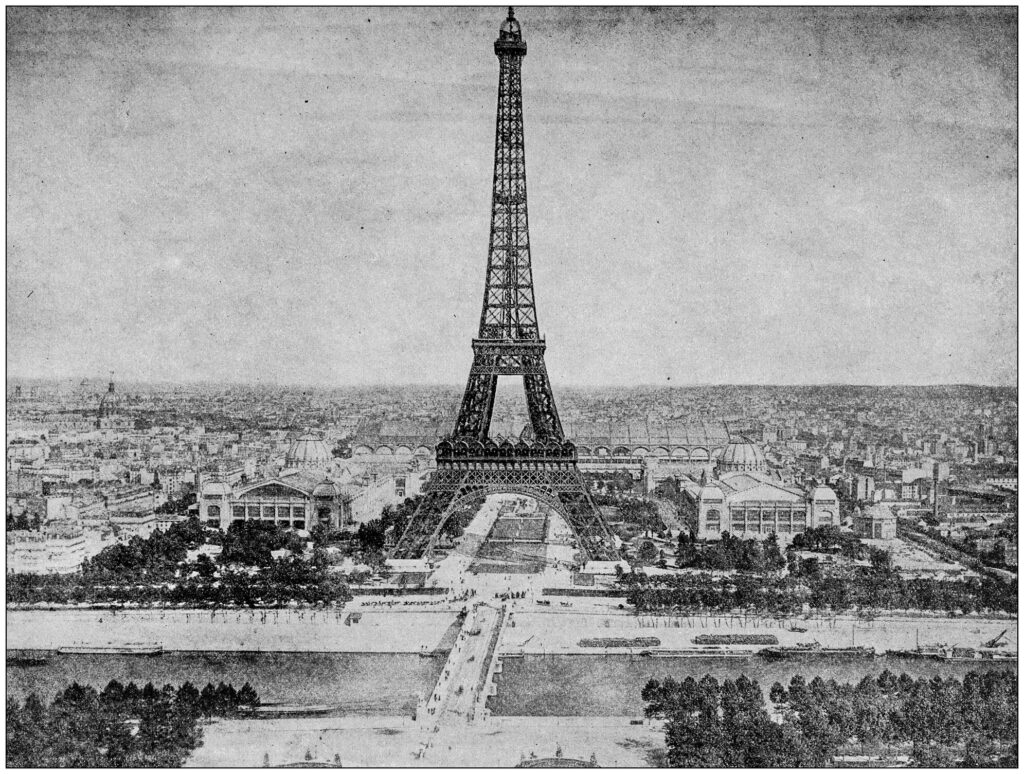The 1889 Exposition Universelle was France's time to shine on the world stage. Also known as a World's Fair, the 1889 Expo was France's chance to show the world it had shaken off revolutionary idealism that ravaged the country 100 years ago. As the world's developed countries industrialized, nations wanted to show the rest of the world how advanced they were compared to other countries. The Eiffel Tower was to be the showcase for the 1889 Expo as fairgoers marveled at France's ability to build things out of iron ore. When work began on January 28, 1887, the Eiffel Tower was envisioned as the tallest human-made structure on earth, surpassing the Great Pyramids and even the Washington Monument.
Expo organizers chose the idea of four vertical beams gradually meeting at the top with girders placed at regular intervals for floor space and stability. However, it wasn't until designers decorated the "pylon" structure with arches and other details that Eiffel chose the idea from two of his designers, Maurice Koechlin and Émile Nouguier. As an independent contractor, Eiffel's company purchased the design rights and constructed a model of what would be known as the Eiffel Tower.
The Eiffel Tower wowed visitors of the 1889 Paris Expo. After completion, the tower had notoriety as the tallest human-made structure on the planet, a remarkable feat of engineering made possible by Eiffel's team. However, many Parisiennes didn't care for the monstrosity that came to be known colloquially as the "Iron Lady." Gradually, the Eiffel Tower became symbolic of Paris culture and a top tourist attraction. It was the tallest structure until the Chrysler Building opened in 1930.

